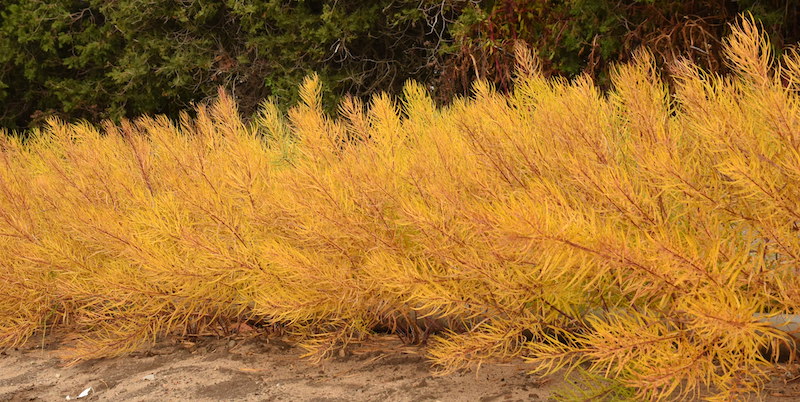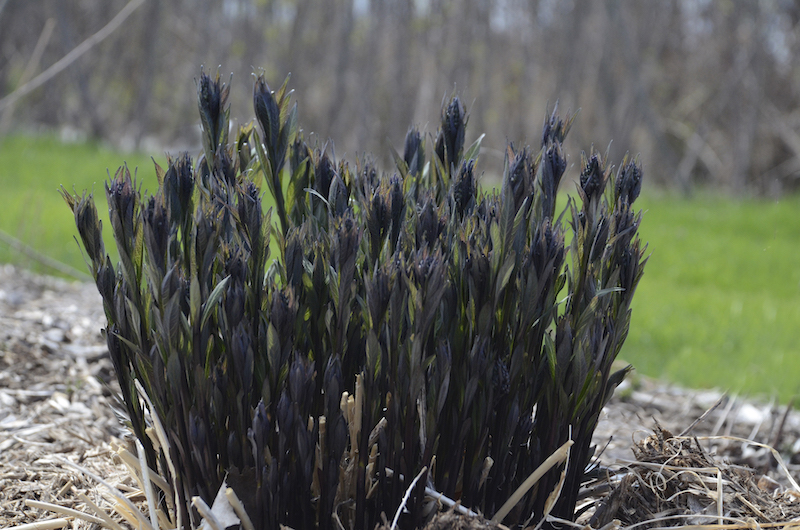Amsonia, more commonly called Blue Star or Arkansas Blue Star, is a hardy native perennial that thrives in USDA growing zones 3-9. The plant is low maintenance and is more than able to tolerate cold winter temperatures while dormant. Few extra precautions are needed to ensure that your Amsonia displays its beautiful flowers and fall foliage for many years in your garden.

Protecting Amsonia in Winter
Rarely do Amsonia plants need extra protection from winter weather. This is an herbaceous perennial that dies back to the ground each fall and emerges in early spring as the soil warms. One thing Amsonia dislikes is poor drainage and waterlogged soil. When planting Amsonia, ensure that the site has excellent drainage even in the winter. The root system is easily damaged by periods of seasonal flooding, which over the years can reduce plant vigor and eventually lead to death.
Mulching the root area and growth crown will add insulation if you garden in a cold climate. Use shredded leaves, fine arborist chips, or even just organic compost and spread a 3-4-inch layer around the plant after cutting back the spent top growth in the fall. In the warmer growing zones, Amsonia may not die back to the ground. The top growth will not remain evergreen though, and the whole plant can be cut back to within 6 inches of the soil to allow new growth to emerge late in the winter or early spring.
Cutting Back Amsonia For Winter
No matter where you garden, Amsonia greatly benefits from being cut back in the fall or late winter before new growth begins. The plant goes into a state of dormancy for the winter, and all of the previous year's top growth eventually dies back. Cut the stems to within 6 inches of the soil. If you wait to cut the plant back in late winter, be careful to not disturb any growing tips that may be developing near the surface of the soil.

Amsonia Winter Care in Pots
Amsonia makes an interesting addition to a planter or container garden and will survive for quite a few years in a pot. Winter care is very basic, although gardeners in the coldest growing zones may want to provide extra insulation. Wrap layers of burlap or horticultural fabric around the pot to keep the roots protected from extended cold temperatures. Plants growing in a container are more likely to be affected by cold and wet weather due to the finite amount of soil available to act as a buffer. Stop watering Amsona as it dies back, and ensure that the pot still has excellent drainage during periods of wet weather. Moving the pots (if they are small enough) to a more protected location is a good precaution for overwintering Amsonia.
Watering Amsonia in Winter
Amsonia will require less and less watering as it goes dormant in the fall. In warmer gardening areas, watering should continue while temperatures remain over 45 degrees F. Avoid overwatering the root zone once the top growth has died back. The plant will not make use of the extra moisture, and root rot could develop.
Growing Amsonia Indoors
Amsonia is not typically grown as an indoor plant. This is a hardy perennial that requires a dormant period through the winter.
Steps To Care For Amsonia in Winter
Step 1 - Cut back spent top growth to within 6 inches of the soil.
Step 2 - Stop watering the plant as it begins to die back in the fall. In warmer growing regions, this may not happen until winter, making watering necessary when temperatures are over 45 degrees F.
Step 3 - Protect containers by moving them to a protected location out of the path of winter winds and storms.
Step 4 - Mulch the root zone with 3-4 inches of mulch to add insulation for the winter.
 |
Author Robbin Small - Published 6-06-2023 |
